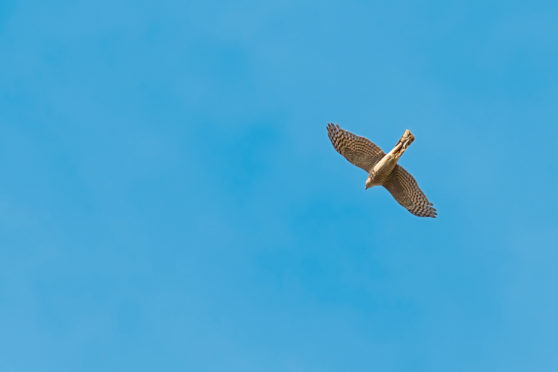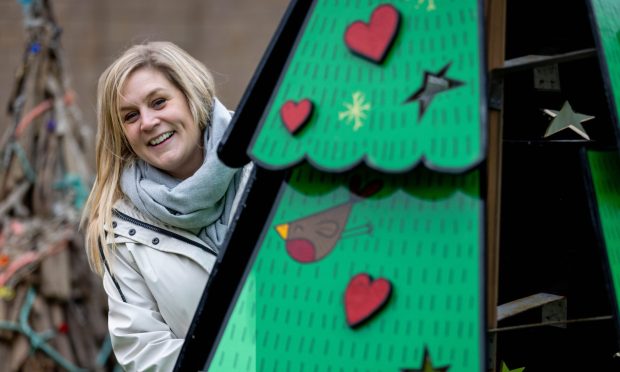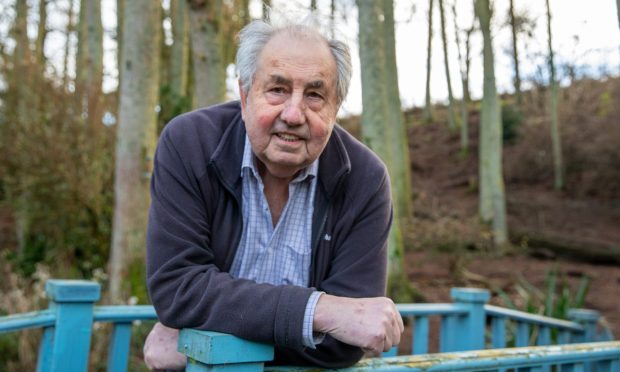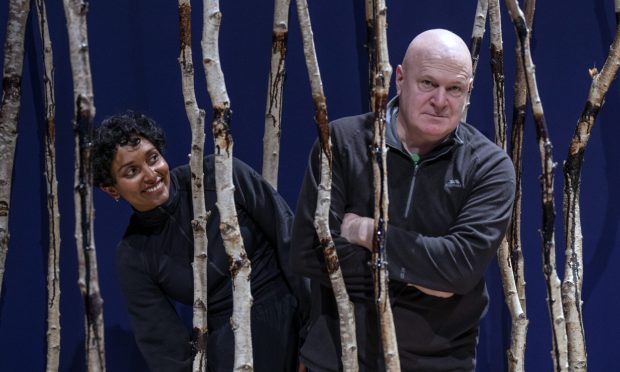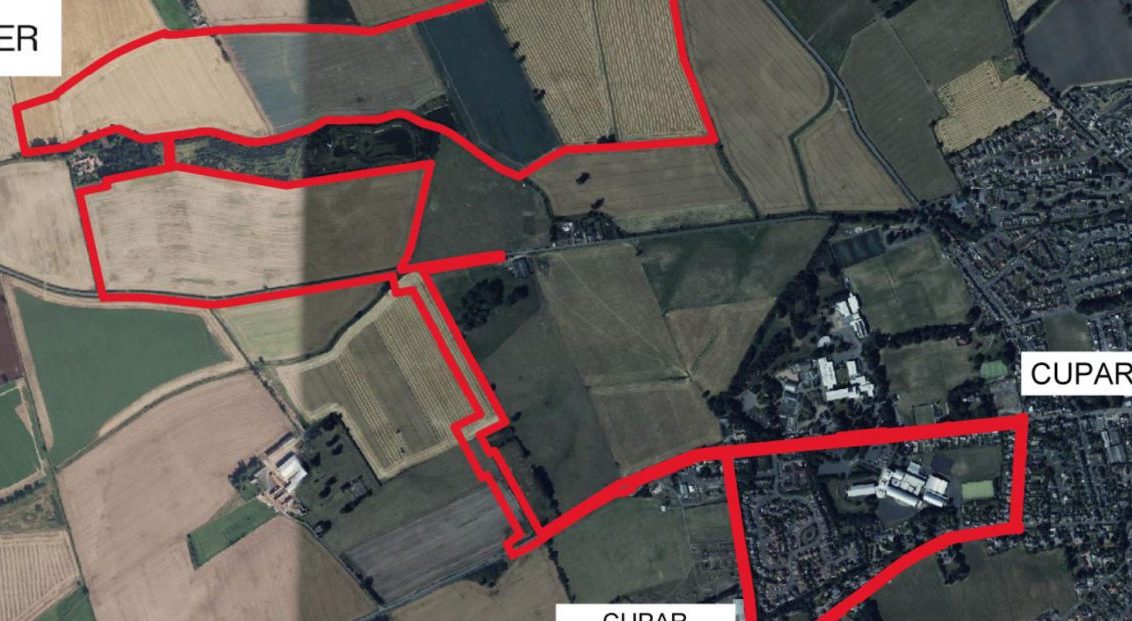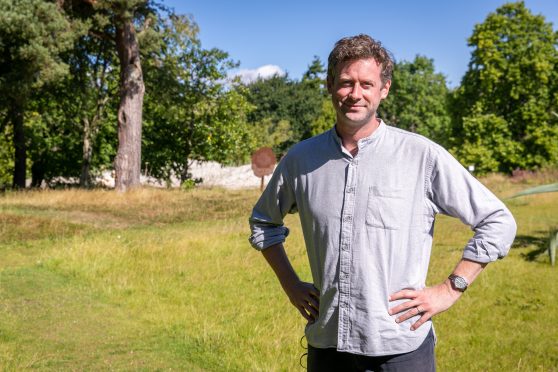Sparrowhawks are found throughout Courier country, but they are surprisingly inconspicuous and often hard to spot. The female can be up to 25% larger than the male.
A cacophony of bird alarm calls suddenly rings through the wood as this winged assassin swoops and weaves her way through the trees like a guided missile.
It was a sparrowhawk, and she was on a mission – a smash and grab raid to flush out a woodpigeon or blackbird and snatch it from the air with her razor-sharp talons. She was gone in a flash, leaving panic in her wake as frightened songbirds chattered with fraught anguish. It took several minutes before the birds settled and serene calm returned to the wood once more.
I am forever fascinated how songbirds can instantly recognise the predatory shape of a sparrowhawk and distinguish it from that of a similar sized bird, such as a woodpigeon or jackdaw. These identification skills must be engrained into their DNA; it is part of their inner fabric and their survival depends upon it.
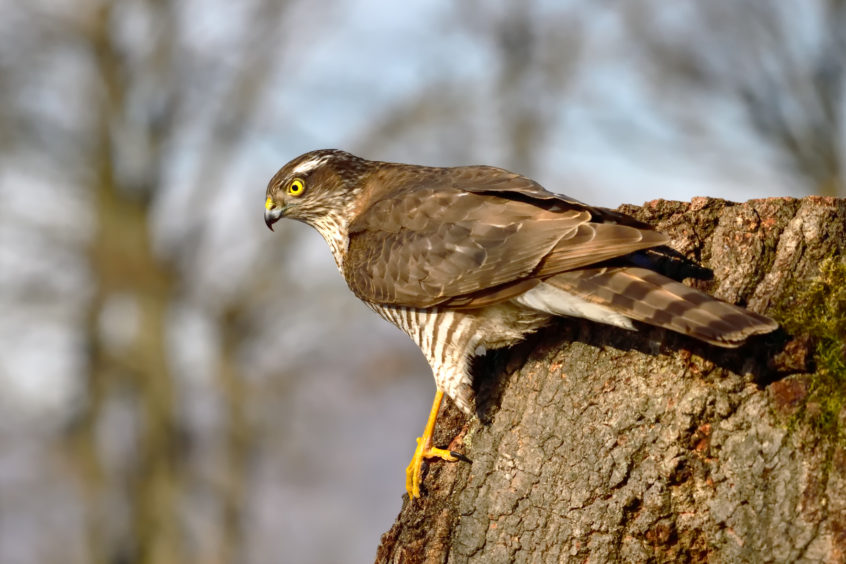
Certainly, sparrowhawks are accomplished hunters, and over the previous few days I had discovered mounds of woodpigeon feathers on several parts of the woodland floor where my local female had plucked her captures. I imagine woodpigeons are her preferred prey because they are of a good size and provide plenty of rich pickings.
I have observed her nest from a distance, high in a pine, but I haven’t ventured too close, lest I cause any disturbance. Sparrowhawks display an interesting phenomenon known as sexual dimorphism, where the female is noticeably larger than the male. This clever evolutionary adaptation enables the pair to make the maximum use of the available food resource within their territory, with the smaller male focusing on tits, finches, and the like, whilst the female will take larger birds such as thrushes and pigeons.
My local wood is a wonderful place to wander just now, the tree leaves so green and verdant, and a wide variety of wildflowers peppering the ground like random scatterings of confetti. On banks by the woodland edge, dog violets prosper, forming drifts of purple splendour. Greater stitchwort also abounds, such delicate white flowers held aloft on fragile stems.
One evening at dusk, when sitting in my garden by the edge of the wood, I watched a male woodcock skim low over the treetops on owl-like wings, uttering strange croaks and intermittent hissy chirps. He was engaged in his mystical evening territorial display flight known as ‘roding’, hoping to attract a mate. Male woodcocks have their favourite aerial circuits, and this bird returned twice, croaking and chirping each time he flew over.
After the third pass, he never returned. I waited at dusk on subsequent evenings in the hope of glimpsing him once more, but each time the gloaming pastel heavens remained persistently empty. Had he failed to attract a mate and gone elsewhere? I will never know, but as I went indoors for the last time, I wished him luck, for woodcocks are rapidly declining birds; shadows in the dark that help make our woodlands such special places.
